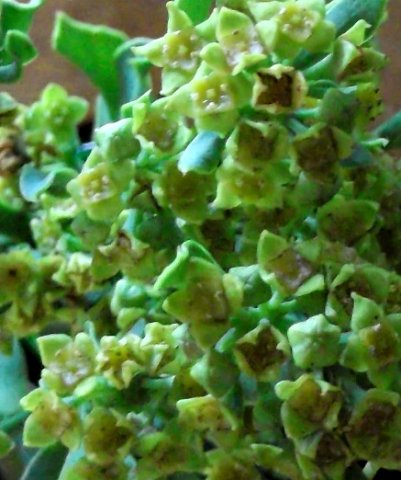Colpoon speciosum

Colpoon speciosum, commonly known as the dwarf tannin bush and in Afrikaans the dwerg-pruimbas (dwarf plum bark), is a woody shrub based on a large lignotuber from which twiggy, many-leaved branches sprout, particularly after fire. The plant reaches 2 m in height.
The lignotuber positioned at or just below ground level is a rounded woody swelling of the root crown found in some plants, including some Eucalyptus species as a protection against destruction, such as by fire. This root crown contains buds from which the new stems sprout, as well as supplies of starch that can support growth temporarily in the absence of photosynthesis such as when leaves are lost.
On top of all the survival preparedness involved in its lignotuber, this plant uses a hyper-careful, belt and braces approach by attaching to the roots of adjacent plants for nutrient access in hemiparasitic fashion. Some in this world do have their cake and eat it.
C. speciosum flowers grow in dense stem-tip clusters. The greenish and cream flowers have four somewhat triangular sepals but no petals. The four anthers are attached to the sepals by hairs. Some sepals in picture spread, others still fold in bud mode over their flower centres. The flat disc of the inferior ovary top is visible in the open flower centre, sporting a short style and stigma. The flower is about 3 mm in diameter.
Flowering and fruiting happen once after every fire. The branches keep growing during the years that follow flowering, adding resources to the lignotuber for more lavish production of the much noticed red to purple berries in spring to autumn only after the next fire.
The species distribution is small, from the Hottentots-Holland Mountains to Bredasdorp. The habitat is lower sandstone and limestone slopes and flats in fynbos. The species is considered to be vulnerable in its habitat early in the twenty first century (Manning, 2007; Bean and Johns, 2005; iNaturalist; Wikipedia; http://redlist.sanbi.org).

